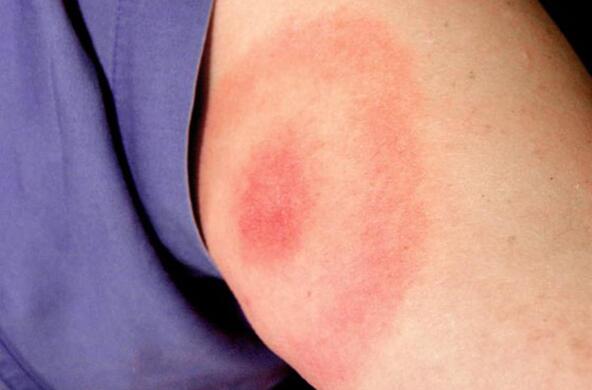Think you're safe from ticks because the harsh winter froze them or because you haven't been trekking through the woods?
Think again. Researchers focused on ticks and the debilitating diseases they spread say the heavy snow that blanketed the Northeast this winter was like a cozy quilt for baby blacklegged ticks that are now questing for blood as the weather warms up. And a researcher at New York's Binghamton University said Lyme disease-infected ticks aren't just in forests and fields.
"We're finding plenty of infected ticks in built environments, places like city parks, playgrounds, work campuses, college campuses," said Ralph Garruto, head of the school's tick-borne disease program. "What makes the problem worse is that people don't perceive of these environments as risky. If they were planning a camping trip, they'd think about how to prevent ticks. But they don't have the same consciousness when they're in town."
Blacklegged ticks, also called deer ticks, are susceptible to cold, and February was the coldest month on record for many Northeast and Midwest locales. But it was also an unusually snowy winter — the snowiest ever for Boston, which had 108.6 inches. That snow may have protected ticks from freezing.
"We know snow insulates," said Rick Ostfeld, an ecologist who has been studying ticks for two decades at the Cary Institute for Ecosystem Studies in the Hudson Valley town of Millbrook, New York. "So it makes sense that it would be protective for ticks. That leads to the hypothesis that more snow cover will lead to a higher abundance of ticks in the spring. But we need a long-time data set to test that hypothesis."
A recent study by a group of Connecticut researchers found a higher number of ticks following winters with heavy snow cover, Ostfeld said. But Ostfeld's research has found a better predictor of the abundance of tick nymphs is the number of white-footed mice the previous summer. Tick larvae are infected with Lyme disease when they feed on infected mice. Larvae turn into poppy seed-sized nymphs and lay dormant until spring, when they can infect the host of their second blood meal.
"Based on last summer's mouse population, we'd expect a moderate to low abundance of nymphs this spring," Ostfeld said.
University of New Hampshire entomologist Alan Eaton said the heavy snowfall this winter could mean more ticks, but a dry spell later in the spring or summer could kill them off. How big a problem looms depends both on the size of the tick population last fall and future weather, he said. The tick population was strong in most of New Hampshire last fall, he said.
"We have the potential for a bad year, or it might not be bad at all," Eaton said. "It heavily depends on what happens from here on out."
In addition to Lyme disease, which causes flu-like symptoms that can progress to joint pain, fatigue and other debilitating symptoms, blacklegged ticks can also transmit other diseases like babesiosis, a bacterial infection similar to Lyme, and rare Powassan virus, which attacks the brain.
Garruto said his field research teams in the Binghamton area near the Pennsylvania border have recently found more ticks living around buildings, backyards, parks, and outdoor benches at shopping centers than in the deep woods. They found a third of 1,500 ticks tested were infected with Lyme.
"The quizzical thing is, we're not seeing the number of confirmed cases of Lyme disease in humans that we expect to see, based on the entomological risk," Garruto said. "We think that's because Lyme is way underreported here."
According to the Centers for Disease Control and Prevention, there were more than 27,000 confirmed cases of Lyme disease and 9,000 probable cases in the U.S. in 2013, with the greatest risk of infection in New England, the mid-Atlantic states and upper Midwest.
The CDC recommends daily tick checks after being outdoors, even in your own yard; using repellents; showering soon after being outdoors; and calling a doctor if you get a fever or rash.







